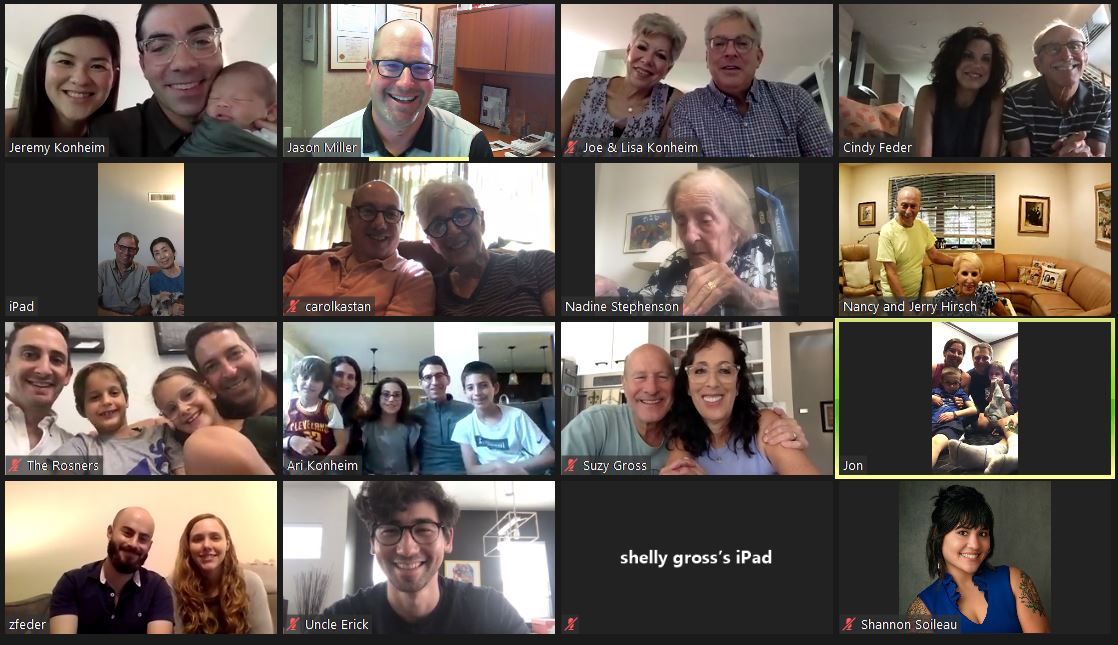A couple of months ago, I started drafting something timely about how local Jewish congregations would soon be opening back up for Shabbat and daily prayer services. At the time, it seemed plausible that this would take place immediately following the Passover holiday. Man plans, God laughs — and Michigan experiences a sharp rise in COVID cases in the state (worst in the nation) that keeps Metro Detroit’s synagogues closed.
While some local congregations have cautiously opened for small prayer groups beyond the in-person bar or bat mitzvah, the majority are waiting until the COVID case numbers decline. So, rather than dwell on the obvious negative effect the pandemic has had on our religious institutions — many people haven’t been inside their synagogue since the high holidays in 2019! — I thought I’d explore some of the silver linings people have discovered while engaging spiritually, albeit virtually, with their congregational community.
If you think back to the early months of 2020, you likely had never heard of Zoom. Now, Zoom is where we go to unwind, decompress and recharge our spiritual batteries. Just as there was a learning curve for so many of us to figure out how to virtually participate in our work meetings, parent-teacher conferences and yoga classes, local congregational leaders had to quickly figure out how “zoom” with their congregants in prayer services, classes, lectures and concerts.
Some congregations had to determine if video conferencing was “kosher” when it comes to Shabbat observance. Smaller congregations had to find the funding to increase their internet bandwidth to be able to professionally stream services. Veteran rabbis and cantors who had spent a career projecting their voices and insights from the bima suddenly had to pivot to leading the congregation from home while keeping their eyes directed at a webcam.
Nonetheless, the Metro Detroit Jewish community – both professional and lay – adapted to this new synagogue reality that had been thrust upon us. While we are socially distanced from one another, we’ve become closer thanks to technology. The silver linings of COVID are plenty. There has been a resurgence in spirituality and the need to come together as a community both to celebrate and to grieve.
A virtual shiva, once unheard of, is now commonplace after the loss of a loved one, making “shiva calls” accessible to both socially and geographically distanced family. Families have been creative in planning Zoom bar and bat mitzvahs. Synagogue leaders are reporting an increase in the number of participants at Shabbat and daily prayer services.
And we’re making new friends during Zoom classes. We’re discovering new places to find spirituality. Maybe you’re praying at a dynamic Los Angeles synagogue on Shabbat morning while sitting on your couch at home. Maybe you’re joining an out-of-state sibling at their virtual daily minyan following the death of a parent. Maybe you’re schmoozing with new people following services (even if you have to provide your own 7-layer cake).
Maybe you were able to make it to Yizkor this year at the end of Passover because you didn’t have to leave your office, which looks a lot like your kitchen. Maybe you have been able to attend morning or evening minyan because rush hour is not on your list of worries.
Pandemic life can feel dark, but, when the clouds of Covid finally part, today’s silver linings can reflect tomorrow’s sunshine. Rather than discarding Zoom along with our masks and pajama bottoms, congregations and organizations should leverage the technological tools they’ve developed to make their future programming as dynamic and accessible as possible.
Who knows — you just might miss that mute button when it’s gone.

Comments
Sign in or become a Nu?Detroit member to join the conversation.
Just enter your email below to get a log in link.